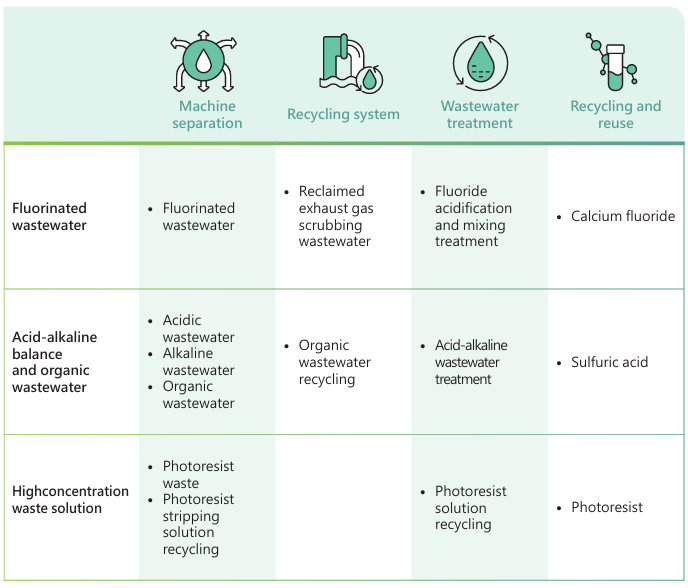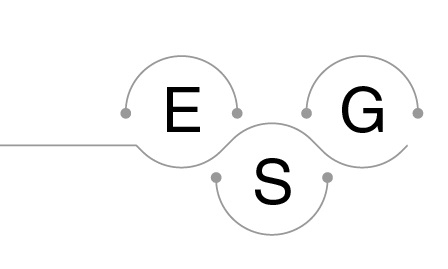5.4.1 Energy Management Policy
Water resources are critical for the semiconductor production process. VisEra has adopted water risk assessment tools of the World Resources Institute (WRI) to identify the water risks in the area where the plant is located, using water availability, environmental discharge quality, and regulatory and reputational risk as key indicators. The results of the assessment for the Company's Hsinchu Plant, and new Longtan Plant sites are all medium to low risk.
We enforced the three strategies of "implement water use plans, seek opportunities to conserve water, and control pollution channels" and we set up have mechanical or electronic flow meters on all water inlets and key water pipelines. We assign on-duty personnel to record meter readings every day. The engineer in charge of the water system compiles statistics and sets water use plans based on the meter reading records. After evaluating the capacity of the system in 2023, we changed the source of water for the plant-side waste gas scrubber from tap water to reclaimed water to demonstrate our commitment to water conservation. We set up a Water Supply Emergency Response Team with representatives from relevant departments to discuss future water shortages, sources for purchasing water, and ways to replenish sources of purchased water. They divided the work based on the resolution to arrange the water purchase and replenishment schedule and implement water resource risk management.
Relationship between water consumption balance and upstream and downstream environment
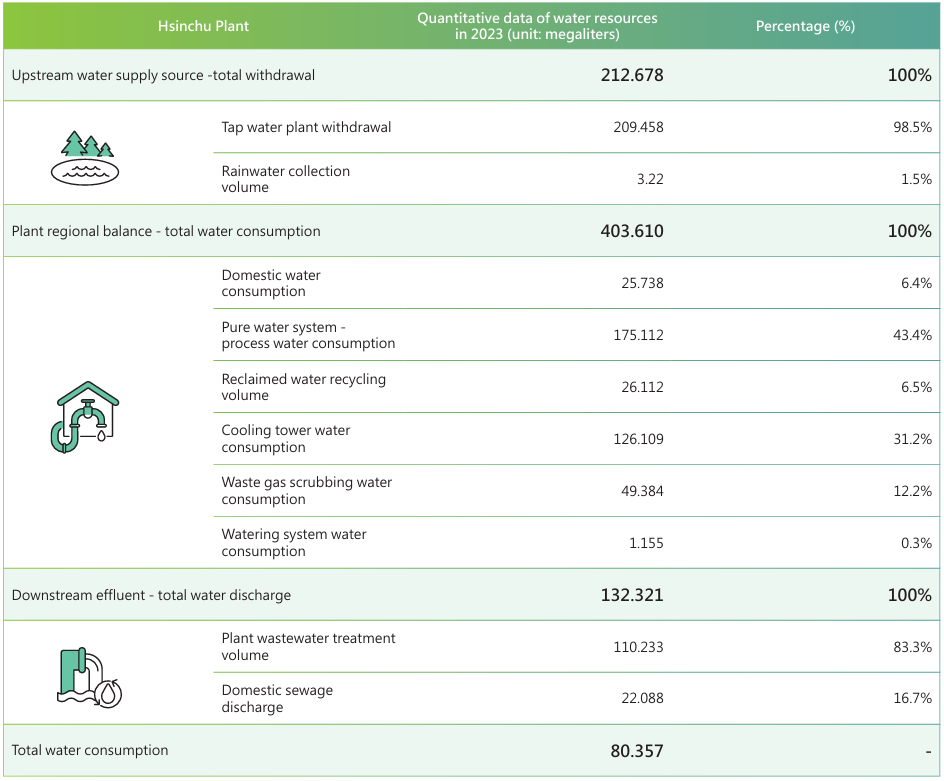
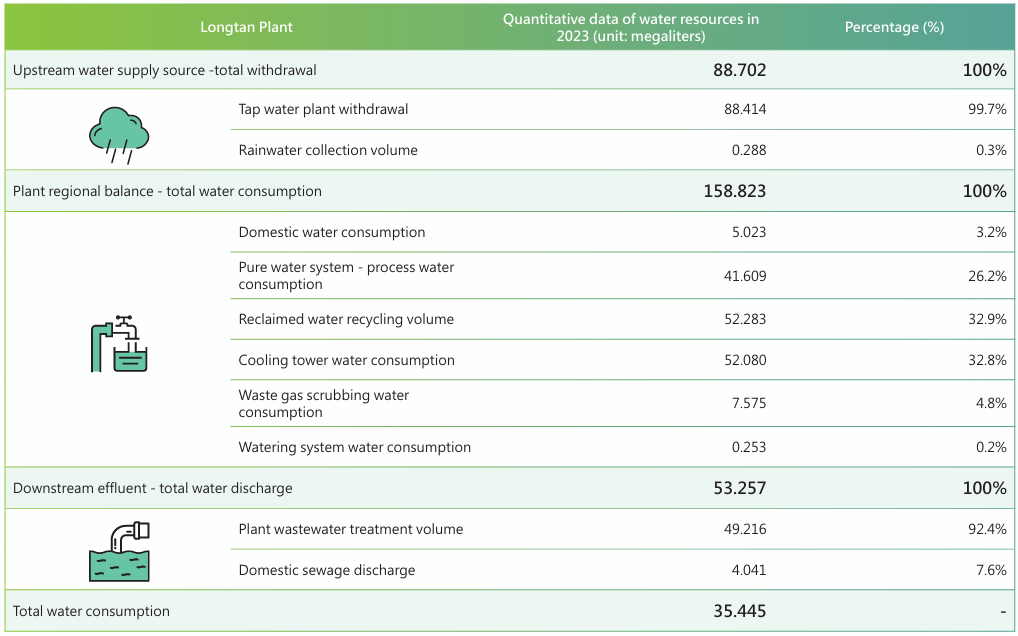
Note 1:The water resource statistics included Hsinchu Plant and Longtan Plant. Zhongli Plant is leased and the tap water withdrawal and wastewater effluent are included in the lessor's
water treatment system and cannot be calculated separately.
Note 2:Rainwater collection involves the use of the plant's rooftop rainwater recovery and reuse system that collects rainwater for the rainwater recovery tank. It is filtered and used as
a source of water in the reclaimed water system.
Note 3:Reclaimed water recycling refers to treatment of wastewater in the plant with advanced organic reclaim (AOR) recycling systems. They treat wastewater that can be reused in
the process by filtration, adsorption, and neutralization, and redirect the treated wastewater to other systems.
Note 4:The pure water system directs tap water through adsorption, dosing, filtration, UV sterilization, and filtering processes for use on the production line and produces wastewater
in the process.
Note 5:The cooling towers of the air-conditioning system uses the contact of water with air for cooling. Some of the water mist escapes from the cooling tower when the system
operates and it causes water consumption.
Note 6:The waste gas scrubbing system mainly uses recycled reclaimed water. If the reclaimed water cannot replenish the water necessary for the scrubbing tower due to its supply of
water to the cooling tower, tap water is used to replenish the supply.
Note 7:The wastewater is collected in the pipeline system and discharged into the sewer system of the Science Park after the pH is adjusted by dosing to meet the discharge standards.
Note 8:The Company's wastewater is discharged in accordance with the water quality standards specified for the sewer system of Hsinchu Science Park by Hsinchu Science Park
Bureau, Ministry of Science and Technology.
Note 9:Total water consumption = total water withdrawal - total water discharge
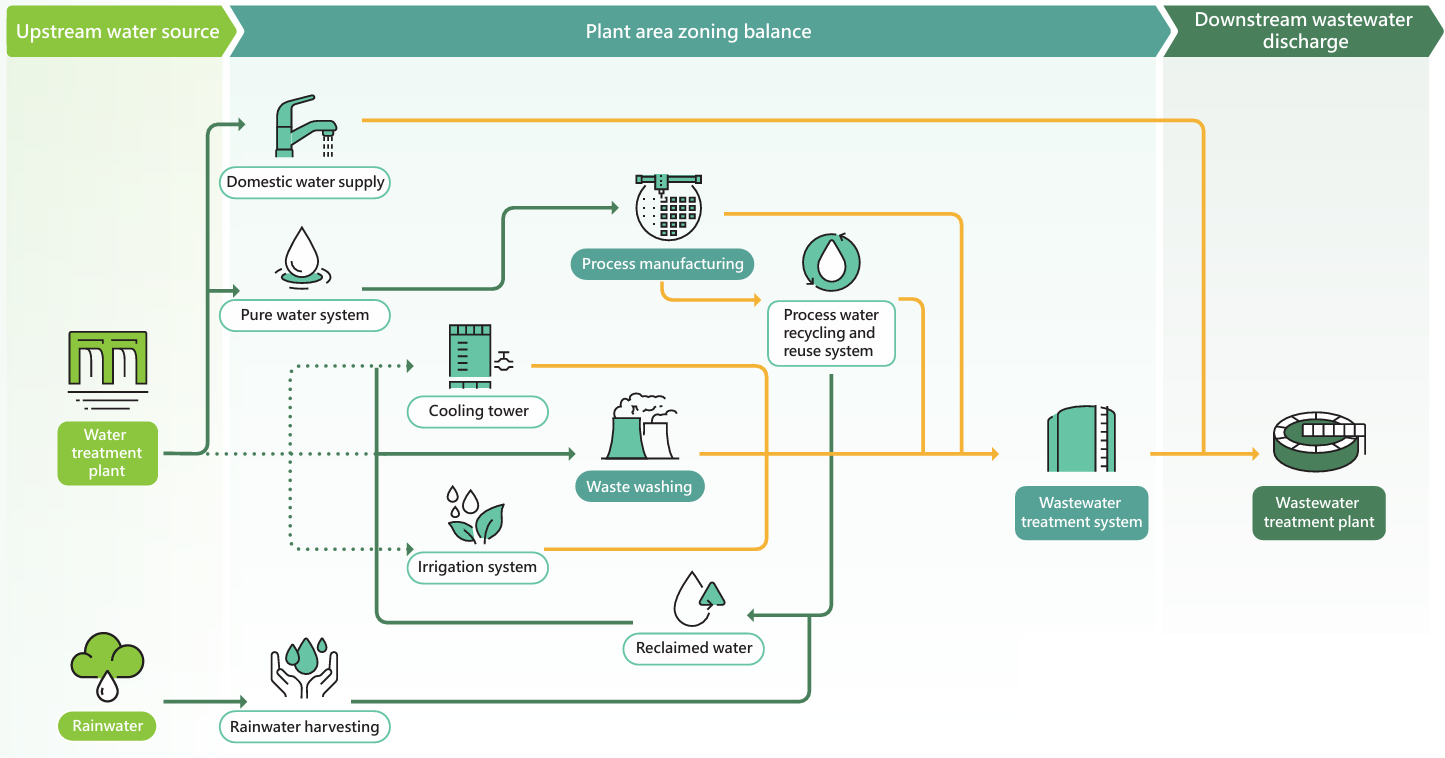
5.4.2 Water Resource Withdrawal
In 2023, VisEra's Hsinchu Plant and Longtan Plant total water withdrawal totaled 301.38 megaliters. Tap water was the main source accounted for about 98.8% and rainwater recycling accounted for 1.2%.
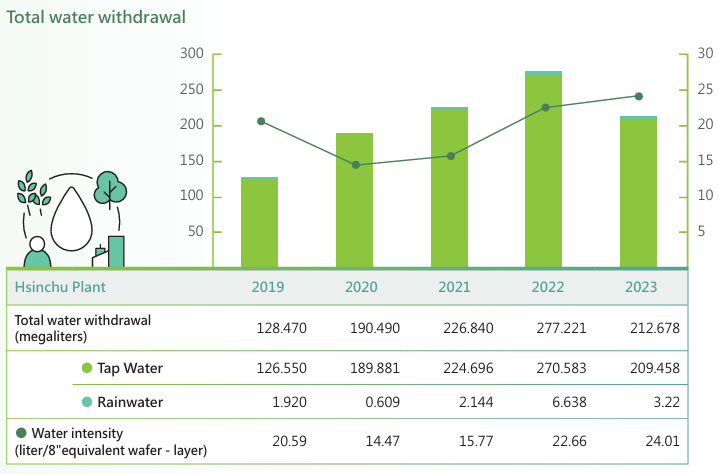
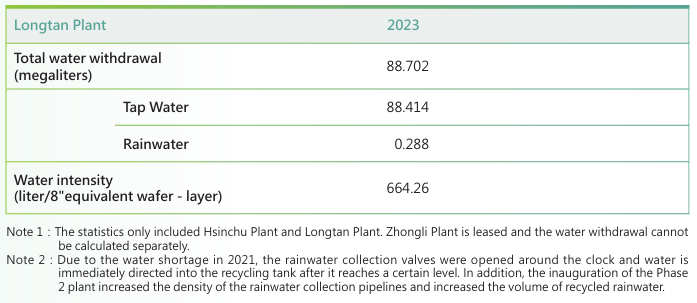
5.4.3 Water Conservation Measures and Recycled Water
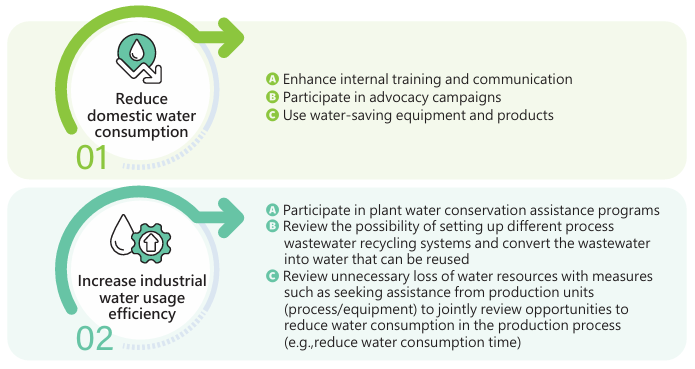
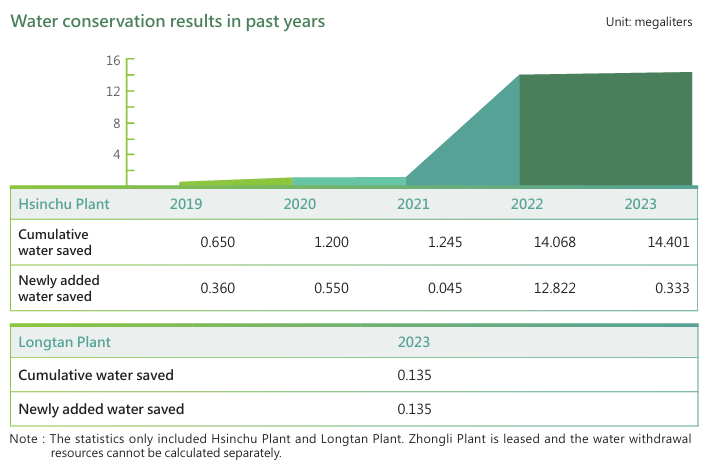
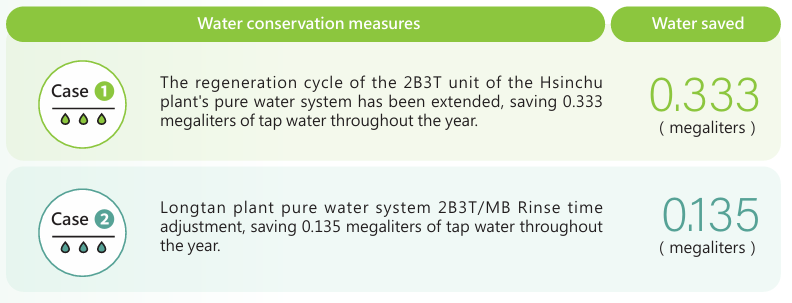
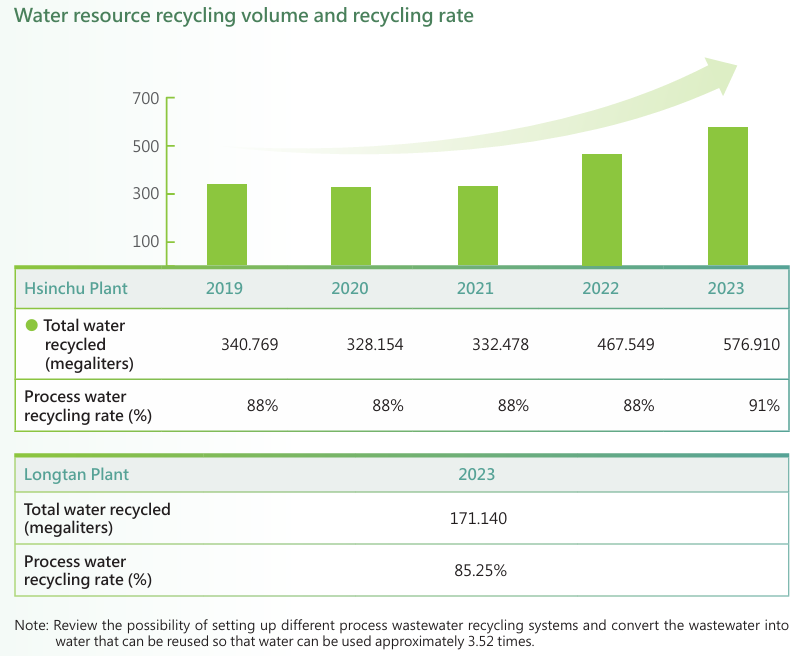
Spotlight
To attain the goal of recycling process wastewater, the wastewater produced during the production process is first collected through separate pipelines based on the level of water content and whether it can/cannot be treated to avoid cross-contamination that could result in the inability to recycle any wastewater. In the first stage, the wastewater that can be recycled by preliminary filtration is directed into the reclaimed water collection system. In the second stage, the reclaimed water is produced after a special treatment system is installed. At present, due to cost and site restrictions, the wastewater with high water content and photoresist stripping solution is still disposed by contractors of outsourced services. If there is a breakthrough in treatment technology in the future, we will prioritize the recycling of this water source. After the concentrated efforts in the two stages, the water resource usage rate can be calculated as "(tap water consumption + reclaimed water) /tap water consumption = number of times a drop of water is used". It means that the water can be used approximately 3.52 times.
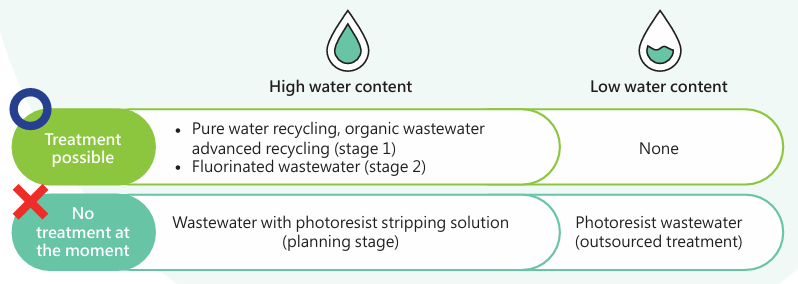
5.4.4 Effluent Management
VisEra actively develops water pollution prevention measures to reduce the potential impact in operations. We implement pollution prevention and treatment of wastewater quality indicators including biological oxygen demand (BOD), chemical oxygen demand (COD), fluoride ion concentration (F-) and suspended solids (SS) discharge concentration. The indicators were in compliance with the discharge water standards of the Science Park.
Total wastewater discharge
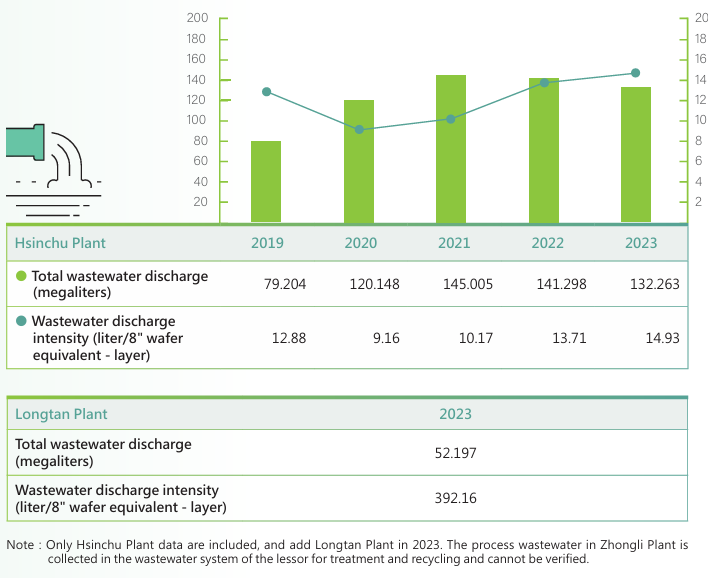
Wastewater classification and recycling process
